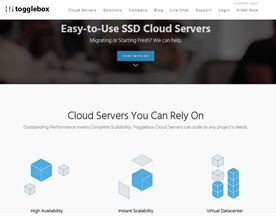The SaaS (Software as a Service) Architecture Maturity Model is a framework that helps organizations evaluate and improve their SaaS architecture. It is designed to assist companies in understanding where they stand in terms of the maturity of their SaaS architecture and development practices and to identify areas for improvement.
The goal of the SaaS Architecture Maturity Model is to help organizations improve their ability to deliver high-quality SaaS products and services to customers by increasing automation, scalability, and reliability. Additionally, it’s a tool that can help organizations to be more flexible and adaptable to changing customer needs and market conditions.
By the end of this blog, you will better understand the SaaS Architecture Maturity Model and how it can be used to improve your organization’s SaaS architecture and development practices.

The Levels of the SaaS Architecture Maturity Model
The SaaS Architecture Maturity Model consists of four levels, each representing a different stage of maturity in terms of architecture and development practices. These levels include:
- Ad-hoc level: This is the initial stage of SaaS architecture maturity where there is little to no standardization in architecture and development practices. Organizations at this level may have a collection of loosely connected systems and tools, with little or no integration between them. Characteristics of this level include a lack of scalability, security, and reliability. Organizations at this level may also have difficulty providing consistent and predictable service to their customers.
- Repeatable level: This level represents a moderate degree of standardization in architecture and development practices. Organizations at this level have established a basic level of automation and integration, and have started to address scalability, security, and reliability. However, these practices are not yet fully integrated into the organization’s culture and may not be consistently applied across all systems and teams.
- Managed level: At this level, organizations have fully integrated architecture and development practices into their culture and have a high degree of standardization and automation. They have a clear understanding of the technical requirements of their SaaS offerings and have implemented processes to ensure scalability, security, and reliability. Organizations at this level are able to deliver consistent and predictable service to their customers.
- Optimized level: This is the highest level of SaaS architecture maturity, where organizations have not only fully integrated and standardized their architecture and development practices, but have also continuously improved them. They have a deep understanding of their customers’ needs and are able to adapt their SaaS offerings to meet those needs. Organizations at this level are able to deliver highly customized and personalized service to their customers and have a competitive edge in the market.
It’s important to note that the levels are not necessarily linear, an organization can move back and forth between the levels based on the changes and updates in the company, the customers’ needs and the market.

How to Use the SaaS Architecture Maturity Model
Using the SaaS Architecture Maturity Model involves several steps:
- Assessing your organization’s current level: The first step is to assess your organization’s current level of SaaS architecture maturity. This can be done through interviews, surveys, and assessments of your systems, processes, and practices. The goal is to identify the strengths and weaknesses of your organization’s SaaS architecture and development practices.
- Identifying areas for improvement: Once you have a clear understanding of your organization’s current level of maturity, you can identify areas for improvement. This may include areas such as automation, scalability, security, and reliability. It’s important to focus on the most critical areas first and prioritize them based on their impact on your organization and customers.
- Developing a plan to move to the next level: With a clear understanding of the areas for improvement, you can develop a plan to move to the next level of maturity. This plan should include specific actions, timelines, and resources needed to achieve the desired level of maturity.
- Continuously monitoring and improving: The SaaS Architecture Maturity Model is not a one-time process, it’s important to continuously monitor and improve your organization’s SaaS architecture and development practices. This includes regularly assessing your organization’s maturity level and identifying new areas for improvement.
- Encouraging collaboration: Encourage collaboration and communication between different teams, departments and stakeholders to ensure that the SaaS Architecture Maturity Model is implemented throughout the entire organization. This will help to ensure that the organization is able to achieve the desired level of maturity and deliver high-quality SaaS products and services to customers.
By following these steps, organizations can use the SaaS Architecture Maturity Model to assess and improve their SaaS architecture and development practices. This can lead to improved ability to deliver high-quality SaaS products and services, increased automation and scalability, and better alignment of architecture and development practices.
Benefits of using the SaaS Architecture Maturity Model
There are several benefits of using the SaaS Architecture Maturity Model:
- Improved ability to deliver high-quality SaaS products and services: By using the model to assess and improve their SaaS architecture and development practices, organizations can increase their ability to deliver high-quality SaaS products and services to customers. This can lead to increased customer satisfaction and loyalty, as well as improved revenue and profitability.
- Increased automation and scalability: As organizations move through the levels of the SaaS Architecture Maturity Model, they can achieve increased automation and scalability in their SaaS offerings. This can lead to improved efficiency and cost savings, as well as the ability to handle a larger volume of customers and transactions.
- Better alignment of architecture and development practices: The SaaS Architecture Maturity Model helps organizations to align their architecture and development practices, leading to better integration and coordination between different systems and teams. This can lead to improved communication and collaboration, as well as increased consistency and predictability in SaaS offerings.
- Competitive edge: Organizations that have reached the highest level of the SaaS Architecture Maturity Model are able to deliver highly customized and personalized service to their customers, providing them a competitive edge in the market.
- Cost savings: Organizations that have reached the highest level of the SaaS Architecture Maturity Model may have lower costs due to increased automation, scalability, and fewer technical issues that arise from ad-hoc systems.
- Flexibility: Organizations that have reached the highest level of the SaaS Architecture Maturity Model will have a more flexible and adaptable SaaS architecture that can quickly adapt to changing customer needs and market conditions.
Using the SaaS Architecture Maturity Model can help organizations improve their ability to deliver high-quality SaaS products and services, increase automation and scalability, and better align their architecture and development practices, leading to better customer satisfaction, cost savings, and a competitive edge in the market.
Conclusion
In conclusion, the SaaS Architecture Maturity Model is a framework that helps organizations assess and improve the maturity of their SaaS architecture. It consists of four levels, each representing a different stage of maturity in terms of architecture and development practices. By using the model, organizations can improve their ability to deliver high-quality SaaS products and services, increase automation and scalability, and better align their architecture and development practices.
Using the SaaS Architecture Maturity Model involves assessing your organization’s current level, identifying areas for improvement, developing a plan to move to the next level and continuously monitoring and improving. This process requires collaboration and communication between different teams and stakeholders to ensure the model is implemented throughout the organization.
The benefits of using the SaaS Architecture Maturity Model include improved ability to deliver high-quality SaaS products and services, increased automation and scalability, better alignment of architecture and development practices, cost savings, flexibility and a competitive edge in the market. Overall, the SaaS Architecture Maturity Model is a valuable tool for organizations to improve their SaaS architecture and development practices and to achieve their goals of delivering high-quality SaaS products and services to customers.















